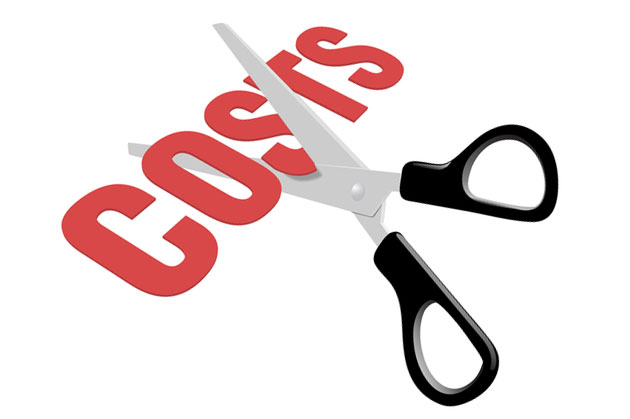
If you want to deliver a great customer experience, you’d better be prepared to pay up… right? Maybe not.
Conventional wisdom suggests that with an enhanced customer experience comes greater expense. But that’s not always the case. The fact is, a better experience and lower costs can actually go hand-in-hand.
The origins of that unlikely pairing lie with a fundamental principle that many businesses fail to appreciate: Broken, or even just unfulfilling customer experiences, inevitably create more work and expense for an organization.
That’s because sub-par customer interactions often trigger additional customer contacts that are simply unnecessary. Here are some examples:
- An individual receives an Explanation of Benefits (EOB) from his health insurer for a recent medical procedure. The EOB is difficult to read, let alone interpret. What does the insured do? He calls the insurance company for clarification.
- A cable TV subscriber purchases an add-on service, but the sales representative fails to fully explain the associated charges. When the subscriber’s next cable bill arrives, she’s unpleasantly surprised and believes an error has been made. She calls the cable company to complain.
- A mutual fund investor requests a change to his account. The service representative helping him fails to set expectations for a return call. Two days later, having not heard from anyone, what does the investor do? She e-mails the mutual fund company to follow-up on her request.
- A student researching a laptop purchase on the manufacturer’s website can’t see the difference between two closely related models. To be sure he orders the right one for his computing needs, what does he do? He initiates an online chat with the manufacturer.
- An insurance policyholder receives a contractual amendment to her policy that fails to explain in plain language the rationale for the change and its impact on her coverage. What does the insured do? She calls her insurance agent for assistance.
In all of these examples, less than ideal customer experiences generated additional contacts to the companies involved. The tragedy is that a better experience upstream would have completely eliminated the need for these subsequent customer contacts.
There are both real and opportunity costs incurred as a result of these unnecessary inquiries.
Every incoming call, chat request, e-mail, tweet or correspondence drives real expense – in service, training and other support resources. Plus, because many of these contacts come from frustrated customers, they often involve escalated case handling and complex problem resolution, which, by embroiling senior service professionals, managers and executives in the mess, drives up the associated expense considerably.
Layer on top of that all of the associated opportunity costs: the diversion of company staff from more valuable, profit-enhancing activities, because their time is consumed handling customer inquiries that shouldn’t even exist.
Studies suggest that at most companies, as many as a third of all customer contacts are unnecessary – generated only because the customer had a failed or unfulfilling prior interaction (with a sales rep, a call center, an account statement, etc.).
This can easily translate into an endless number of expense-inducing (but totally avoidable) customer interactions. Take into account the additional opportunity costs and it’s enough to make a CFO cry.
To avoid this profit-sapping outcome, consider these three tips:
- Really understand why customers contact you. Whether your company handles a thousand customer interactions a year or millions, don’t assume they’re all “sensible” interactions. Identify and examine the Top Ten reasons why customers contact you. You’ll likely find that for some subset of those categories, these contacts can be avoided with upstream changes in the form of streamlined procedures, simplified communications or revised marketing materials.
- Drill the importance of ownership into all sales and service staff. How many of your customer contacts are really just follow-up inquiries, generated only because a staff member failed to keep a promise or honor a commitment to the customer? Absence of ownership drives customers crazy. Yet, with good training and executive support, it’s one of the easiest ways to improve the customer experience while simultaneously reducing costs.
- Promote a balanced orientation on quality and quantity. A single-minded focus on volume measures (e.g., how many calls you answered, how many sales you closed, how many widgets you produced) can compromise quality. The resulting errors, by triggering unnecessary contacts and driving corrective re-work, will offset any productivity gains you thought you were realizing.
Great customer experiences can be powerful drivers for a firm’s top line. Even small improvements in customer loyalty, retention and repurchase can have a huge impact on revenues.
What gets far less attention, though, is the fact that better experiences can also translate into expense reduction and avoidance, given that poor customer interactions spawn lots of unnecessary work that consumes organizational resources.
So, the next time you’re looking to control costs, consider a counterintuitive approach: deliver a better customer experience. It’s a great way to turn customers (and CFOs) into raving fans.
Jon Picoult is founder of Watermark Consulting, a customer experience advisory firm that helps companies impress customers and inspire employees, creating raving fans that drive business growth. Author of “FROM IMPRESSED TO OBSESSED: 12 Principles for Turning Customers and Employees into Lifelong Fans,” Picoult is an acclaimed keynote speaker, as well as an advisor to some of world’s foremost brands. Follow Jon on Twitter or Instagram, or subscribe to his monthly eNewsletter.